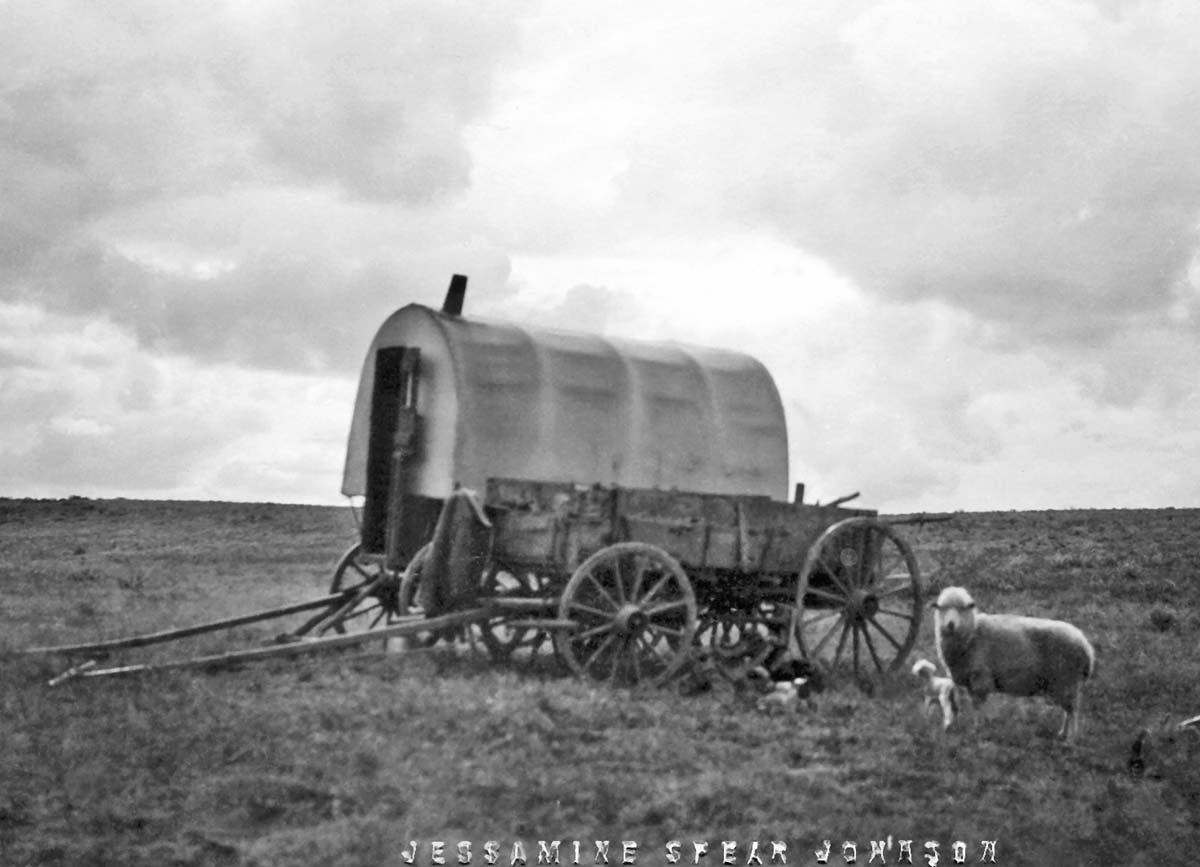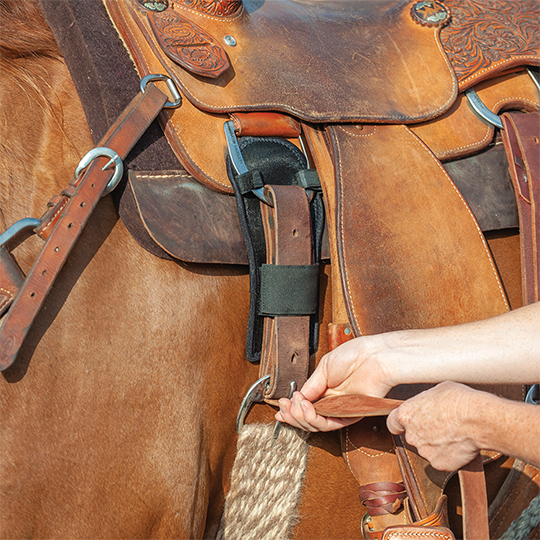Spring Babies
Mar 31, 2022 by Tempe Javitz
Spring Babies !
March and April bring lots of new babies, tame and domestic.
Ranchers keep the two-year-old heifers close by as they
birth their first calves. Sometimes there is trouble, so
the cowboys literally help pull a calf in order to bring it
into the world.
This is a labor-intensive time for all concerned. New calves
arrive with no respect for time or weather. I remember my dad
checking the mother cows periodically through the day and night.
If a calf was especially weak or born in a snowstorm, it often
spent a day in our basement. Wrapped in old canvas and bottle fed,
these tiny four-legged cuties were up and around in no time. I
loved to bottle feed them.
.jpg)
Uncle Jack Moody bottle feeding a calf.
Puppies were also welcomed at Jessamine and Will's X4 ranch,
especially by the children.
.jpg)
The cows followed the feed wagon, so the new babies had to struggle
to keep up.
.jpg)
Spring also brought new lambs. They were usually born later in April.
Will and Jessamine had numerous sheep bands. This photo was one
of her favorites. Check out the gallery of photos at tempejavitz.com.

It’s hard to resist photos of young animals. I will end with my favorite
doggie photo. For quite a few years Will raised Airedales as herd and
hunting dogs.

Cowboy jargon--Cinch: This is the girth for a western saddle which
passes under a horse or mule’s belly to hold the saddle or pack on the
animal’s back. The D ring is a metal ring permanently attached to the
saddle and used to attach the cinch to the saddle on the right side.
The latigo is the wide leather strap attached to the D ring on the left
side of the saddle and is used to go through the cinch ring and secures
the saddle to the horse. Now that you are totally confused here’s a
photo with permission from https://shop.coolhorse.com

March and April bring lots of new babies, tame and domestic.
Ranchers keep the two-year-old heifers close by as they
birth their first calves. Sometimes there is trouble, so
the cowboys literally help pull a calf in order to bring it
into the world.
This is a labor-intensive time for all concerned. New calves
arrive with no respect for time or weather. I remember my dad
checking the mother cows periodically through the day and night.
If a calf was especially weak or born in a snowstorm, it often
spent a day in our basement. Wrapped in old canvas and bottle fed,
these tiny four-legged cuties were up and around in no time. I
loved to bottle feed them.
.jpg)
Uncle Jack Moody bottle feeding a calf.
Puppies were also welcomed at Jessamine and Will's X4 ranch,
especially by the children.
.jpg)
Vic and Brad Johnson with the puppies, X4 Ranch, 1927.
The cows followed the feed wagon, so the new babies had to struggle
to keep up.
.jpg)
Coming to the feed ground, this new baby has woobly legs.
Spring also brought new lambs. They were usually born later in April.
Will and Jessamine had numerous sheep bands. This photo was one
of her favorites. Check out the gallery of photos at tempejavitz.com.

First arrival in camp, Tullock Creek, April 21, 1929.
The lamb is so small it’s just a white speck in front of its mother.
It’s hard to resist photos of young animals. I will end with my favorite
doggie photo. For quite a few years Will raised Airedales as herd and
hunting dogs.

Rimrock & Katrina, young Airedales.
Cowboy jargon--Cinch: This is the girth for a western saddle which
passes under a horse or mule’s belly to hold the saddle or pack on the
animal’s back. The D ring is a metal ring permanently attached to the
saddle and used to attach the cinch to the saddle on the right side.
The latigo is the wide leather strap attached to the D ring on the left
side of the saddle and is used to go through the cinch ring and secures
the saddle to the horse. Now that you are totally confused here’s a
photo with permission from https://shop.coolhorse.com

